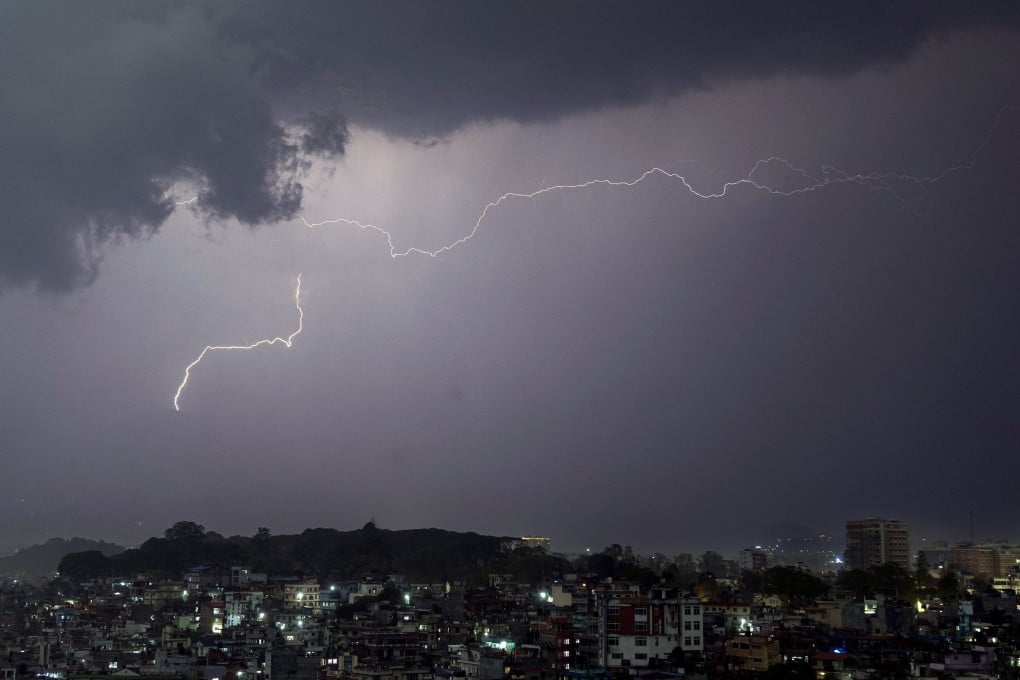Rise in lightning-related deaths in Nepal prompts calls for safe shelters, better forecasting
- Lightning has killed 360 people in the last five years in Nepal, the third-highest number of fatalities after landslides and fires
- A lack of technology for early warning systems, inadequate shelters and protection for outdoor workers are among factors for the rise in fatalities

The frequency of lightning fatalities in Nepal in recent years has become a worrying trend, and experts warn it will only get worse as warming temperatures make storm activity more frequent and intense.
Between 2019 and 2023, there were 360 lightning-related deaths in Nepal, killing even more people than the annual floods that wreak havoc on the country during the rainy season, according to the government’s disaster risk reduction portal.
Only landslides, and fires, which killed 714 and 452 people, respectively, have produced more natural disaster-related deaths in the country over the past five years.
With nearly four deaths per million people, researchers say the country’s lightning-linked fatalities are among the highest in South Asia, a region that is already more prone to storm activity than most.
“We didn’t know the reality of lightning in Nepal until recently,” Shri Ram Sharma, lightning expert and physics professor at Kathmandu-based Amrit Science Campus, told This Week in Asia. “We didn’t have any data to know where the risk-prone areas were or to support disaster risk reduction plans. It was an ignored topic.”
To plug the gap, Sharma and his colleagues published a comprehensive study in the Geomatics, Natural Hazards and Risk open access journal in 2021 after analysing lightning occurrences and fatalities between 2011 and 2020. The paper found that Nepal reported more than 1 million lightning strikes from 2016 to 2020, with March to August being the most active months due to cloud build-up.
“Lightning occurrence and fatalities are most frequent in districts along the southern border, and least in the northern high-elevation districts,” the study said. “Lightning occurrence and fatalities are concentrated in the pre-monsoon and monsoon months … the maximum lightning activity takes place during the months of April, May and June.”
